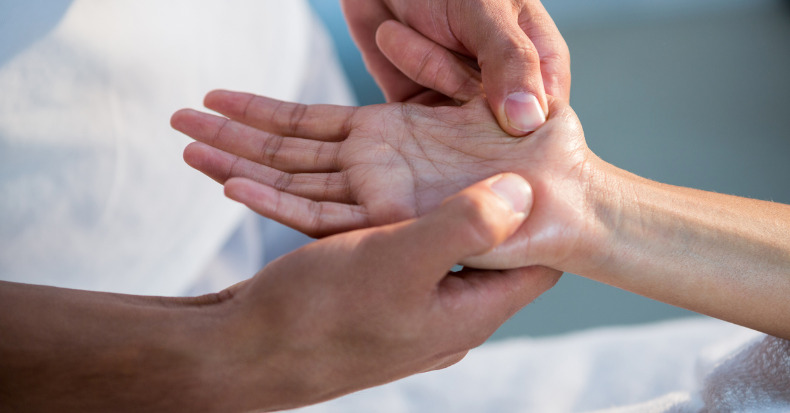Carpal tunnel syndrome (CTS) is a condition characterized by the slow onset of pain, tingling, or numbness (paresthesia) in the thumb, index, and middle and thumb-half of the ring finger. Over time, symptoms can increase in both frequency and severity to the point that the individual cannot comfortably carry out their regular work or leisure activities. Initially, a sufferer may manage the condition by shaking their hand or flicking their fingers, but as the symptoms worsen, they may try home and over-the-counter remedies to find temporary relief, at best. It’s at this point when they may seek treatment with a doctor of chiropractic.
But why would a chiropractor be useful for managing CTS? It starts by understanding the anatomy of the carpal tunnel itself. This structure is made up of eight small bones that form the arch of the tunnel with the transverse carpal ligament serving as the floor. Several tendons as well as the median nerve pass through this tunnel. The median nerve emerges from the neck and travels through the shoulder, elbow, and forearm before entering the carpal tunnel. It then supplies motor instructions to part of the hand and relays sensory information back to the brain. Anything within the carpal tunnel that reduces the available space—tendon inflammation, water retention, or compression of the shape of the tunnel—will apply force on the median nerve that can affect its normal movement and function. When this occurs, symptoms will begin to manifest.
The goal of treatment is to reduce pressure on the median nerve and improve its mobility as it passes through the carpal tunnel. Primarily, doctors of chiropractic accomplish this with the use of manual therapies—manual and instrumental soft tissue mobilizations, massage therapy, bone and joint mobilizations or manipulations, and neurodynamic techniques—to restore normal movement to the affected joints and associated soft tissues. A 2022 systematic review and meta-analysis (considered the most respected form of research) concluded that manual therapies provide statistically significant improvement in symptom severity, physical function, and sensory and motor nerve conduction in mild-to-moderate CTS cases.
To achieve a satisfactory outcome for the patient, chiropractic care may also include addressing musculoskeletal issues along the course of the median nerve as dysfunction in the neck, shoulder/arm, and forearm/elbow often co-occur with CTS and can produce CTS-like symptoms. If non-musculoskeletal conditions are present, the case may need to be co-managed with the patient’s medical physician or a specialist.


